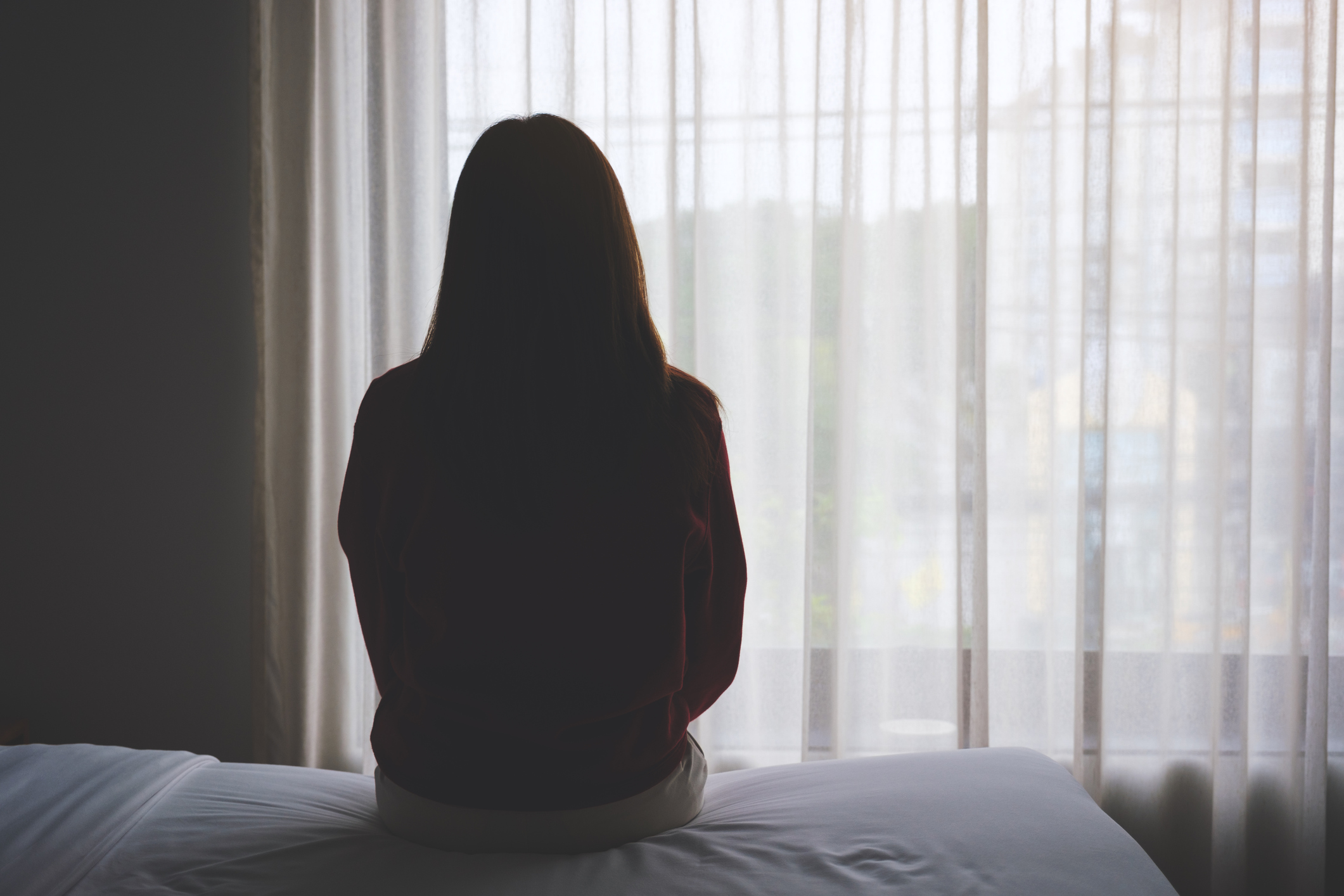
Table of Contents
Feeling Low for a Long Time? It Might Be Dysthymia, Not Just Depression
Written By: Charlie Health Editorial Team

Clinically Reviewed By: Courtney Way
May 19, 2025
5 min.
Dysthymia, or persistent depressive disorder, is a long-lasting form of depression that often goes unrecognized, yet it can have a major impact on mental and physical health.
Learn more about our Clinical Review Process
Table of Contents
We all feel down sometimes. But when that low mood lingers for weeks, months, or even years, it may signal something more than just temporary sadness. If you’ve been feeling off, drained, or emotionally flat for a long time, it could be a form of depressive disorder called dysthymia, not just depression. Read on to learn more about how dysthymia differs from other forms of severe depression, why its symptoms are easy to overlook, and why this often-misunderstood form of mild depression actually deserves serious attention.

Feeling low doesn’t always mean it’s “just stress”
If you’ve been stuck in a long-term fog, it could be dysthymia and Charlie Health can help.
What is dysthymia (aka persistent depression)?
Dysthymia, also known as persistent depressive disorder, is a chronic but often overlooked type of depression. It doesn’t always feel as intense as severe depression, but it hangs around, often for two years or more in adults, causing people to feel like life has lost its color.
Common symptoms include:
- Low mood
- Fatigue
- Low energy
- Loss of interest in daily activities
- A general feeling that something’s missing
Many people mistake this kind of persistent depression for just being tired or dealing with chronic stress, but it’s more than that. Dysthymia is a diagnosable mental health condition that deserves attention.
How dysthymia differs from major depressive disorder
Dysthymia
Major depression disorder
Duration: 2+ years
Intensity: Low to moderate
Functionality: Often maintained
Symptoms: Chronic sadness, low energy, apathy
Duration: 2+ weeks
Intensity: Moderate to severe
Functionality: Often impaired
Symptoms: Deep despair, inability to function
While both dysthymia and major depressive disorder involve depression symptoms, they show up in different ways. Dysthymia is persistent and subtle, and people may still function but feel “off” most of the time. Major depression comes in episodes that are more intense and can disrupt daily life. Think of it this way: dysthymia is like a low-grade fever that lasts for years. It’s not always debilitating, but it constantly affects your mood, motivation, and outlook on life.
Signs you might be experiencing dysthymia
Dysthymia can be difficult to spot because many people adapt to feeling unwell. Some warning signs include:
- Ongoing feelings of sadness, emptiness, or hopelessness
- Persistent fatigue and low energy
- Poor appetite or overeating
- Insomnia or sleeping too much
- Low self-esteem or excessive guilt
- Difficulty concentrating or making decisions
- Constant self-criticism or irritability
You might find yourself pulling away from activities you once enjoyed or feeling emotionally numb. These feelings may fluctuate with seasons, especially in winter, and resemble a seasonal pattern of depression.
Why dysthymia deserves attention
Because dysthymia tends to develop slowly, its symptoms—like low energy, pessimism, and emotional numbness—are often mistaken for personality traits or simply the effects of chronic stress. Many people don’t recognize they’re living with a mental health condition and may never seek help. This invisibility makes it harder to diagnose and treat.
1. It can affect all aspects of daily life
Even when someone appears to be functioning—working, socializing, or taking care of their family—dysthymia can dull their experience of joy and connection. The emotional weight may not be obvious to others, but it can leave the person feeling empty, exhausted, or detached. This chronic low-grade suffering can wear down a person’s resilience over time.
2. It is linked to suicidal thoughts and behaviors
Persistent depressive disorders are strongly associated with an increased risk of suicidal thoughts and behaviors. Even when the sadness isn’t severe, the constant emotional weight can wear a person down, leading to feelings of hopelessness.
Dysthymia may appear like a form of mild depression, but research shows that the risk of suicidal behavior is just as high. In a study of inpatient suicide attempters, there were no significant differences in suicide mortality, frequency of attempts, or method of attempt between people with dysthymia and those with major depressive disorder. In other words, chronic depression can be just as life-threatening as acute depression.
The study also found that people with dysthymia were more likely to have co-occurring personality disorders—especially Cluster B disorders—which can intensify emotional instability and impulsive behavior, both of which are linked to increased suicide risk. If you’re experiencing suicidal thoughts or are in danger of harming yourself, this is a mental health emergency. Contact The Suicide & Crisis Lifeline 24/7 by calling or texting 988.
3. It may increase the risk of harmful coping behaviors
In an effort to cope, some people may misuse food, alcohol, or other substances, choices that can create harmful patterns and worsen both mental and physical health over time. Research shows a strong link between dysthymia and substance use issues; people with chronic low mood often turn to substances like alcohol or drugs to self-soothe. This kind of coping may offer short-term relief but often deepens depressive symptoms and makes recovery harder.
Diagnosis and treatment options for dysthymia
The most important reason dysthymia deserves attention is that it’s treatable. Therapy, medication, and lifestyle changes can lead to real improvement in mood and functioning. People who have lived for years in a low emotional state often describe feeling like a fog has lifted once they get the right support. Recognizing dysthymia for what it is — a legitimate, treatable mental health condition — is a powerful step toward healing and reclaiming joy.
Diagnosing dysthymia involves identifying ongoing depression symptoms lasting two years or more. A licensed therapist or mental health provider can conduct a thorough assessment that may include discussing thoughts, behaviors, and changes in daily functioning. Effective treatment options include:
- Therapy: Modalities like Cognitive Behavioral Therapy (CBT) help reframe negative thought patterns and improve emotional management.
- Medication: Antidepressants, especially those targeting neurotransmitter imbalances, such as SSRIs, are commonly used.
- Lifestyle interventions: Regular exercise, sleep hygiene, and nutrition can support mental health.
- Treating co-occurring conditions: Especially when anxiety, bipolar disorder, or psychosis symptoms are also present.
If you’ve been feeling low for a long time, it’s okay to ask for help. Talking to a therapist or trusted provider can lead to the support you need, whether that’s therapy, medication, or a combination of approaches. Even if you aren’t dealing with severe symptoms, your experience still matters. You deserve care, understanding, and healing, not just survival.

How Charlie Health can help
If you or a loved one are struggling with dysthymia or depression, Charlie Health is here to help. Charlie Health’s virtual Intensive Outpatient Program (IOP) provides mental health, substance use, and eating disorder treatment for people dealing with serious conditions, including dysthymia and depression. Our expert clinicians incorporate evidence-based therapies into individual counseling, family therapy, and group sessions. With support, managing your mental health is possible. Fill out the form below or give us a call to start healing today.
References
https://pubmed.ncbi.nlm.nih.gov/16930163/
https://pubmed.ncbi.nlm.nih.gov/18389422/





